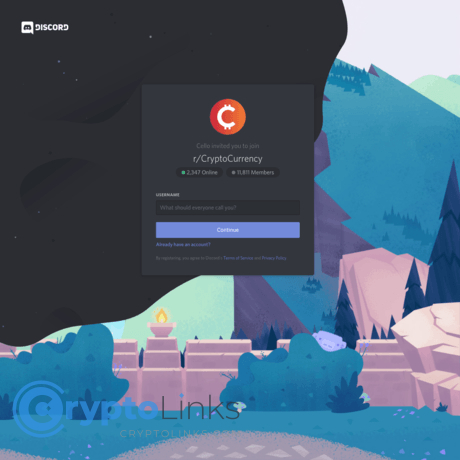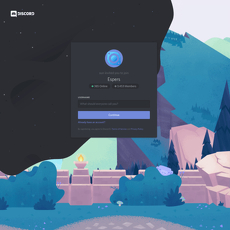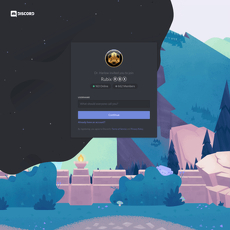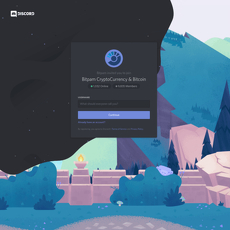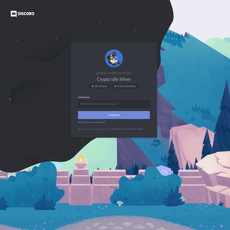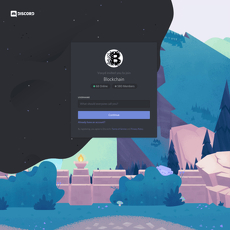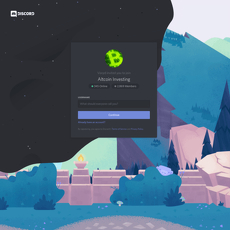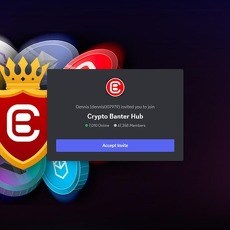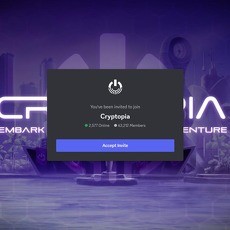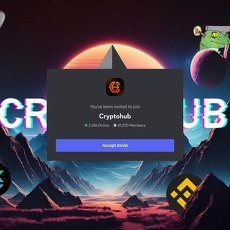CryptoCurrency Review
CryptoCurrency
discordapp.com
Cryptocurrency Review Guide: Everything You Need to Know (with FAQ)
Ever jump into a crypto Discord, scroll for 10 minutes, and think: “Where’s the actual value?”
You’re not alone. The right server can save you months of guesswork. The wrong one can waste your time, drain your focus, and expose you to scams. I’m going to cut through the noise and show you exactly how I look at the Cryptocurrency Discord—what matters, what doesn’t, and how to use it without getting overwhelmed.
Why most crypto Discords feel broken
Crypto moves fast. Discord moves faster. That combo often turns servers into a stream of hot takes, recycled charts, and “alpha” that’s already stale. And that’s before the DMs from “helpful” strangers start.
- Signal-to-noise problem: High message volume doesn’t equal useful information. A 2018 Science study showed false info spreads faster than the truth online—crypto is no exception.
- Scam exposure: The FTC reports over $1B in reported losses tied to crypto scams since 2021. On Discord, most of it starts with an unsolicited DM.
- Time sink: Without filters, you’ll scroll for hours and come away with nothing to act on. Attention is your edge—protect it.
“If a server makes you feel FOMO every 10 minutes, it’s probably optimizing for engagement, not outcomes.”
What I promise you’ll get here
Instead of hype, I’ll give you a clear, honest breakdown of the Cryptocurrency Discord: its focus, content quality, moderation, useful tools, safety, and real user experience. I’ll also share quick filters I use to find the signal fast—so you can decide if it’s worth your time and how to squeeze the most value from it.
How I actually test a crypto Discord
I keep it simple, repeatable, and ruthless about time:
- 10-minute scan: Read the last 24 hours of messages in the main “market” channels. Count useful posts vs. memes/hype. If I can’t find anything actionable in 10 minutes, that’s a red flag.
- Pins audit: Check pinned messages in key channels. Good servers pin concise guides, rules, tool links, and current playbooks. Bad ones pin giveaways and old announcements.
- Mod test: Report a small issue (spam link, bot misfire) and time the response. Fast, consistent moderation is non‑negotiable.
- Source checks: When someone drops “news,” I look for a link to a reputable source (project blog, SEC/ CFTC/ OFAC notices, major outlets). No link = low trust.
- Repeat insight rate: After 48 hours, do I see new insights or the same recycled calls? Real communities compound knowledge; echo chambers don’t.
What to check before you even join
- Invite health: Is the link official and current? Avoid “reupload” invites from random bios.
- Verification level: Servers that require phone/email/CAPTCHA cut bot spam dramatically.
- Public rules and scope: Clear rules, clear focus. If everything is “alpha,” nothing is.
- Staff visibility: Are admins/mods publicly listed and active? Lurking staff = slow responses when it matters.
Red flags I always watch for
- Unsolicited DMs: No legit mod will DM you first. Turn off DMs from server members by default. Discord’s own guidance backs this: Keeping Yourself Safe.
- Paid “guaranteed” calls: Any promise of risk‑free returns is a scam. Full stop.
- Hindsight charts: After-the-fact wins without pre-call timestamps or reasoning. If there’s no track record, it’s marketing.
- Giveaways with wallet connects: No reputable server requires you to connect a wallet to “verify” for a prize.
- Permalinks to link shorteners: Shorteners hide destinations. Expect phishing.
How to get value fast (without getting overwhelmed)
Here’s the simple roadmap I use for any new crypto Discord—works especially well for the Cryptocurrency server:
- Minute 0–2: Join, turn off DMs from server members, and mute categories you don’t care about (e.g., off-topic).
- Minute 3–10: Read the rules, announcements, and pinned messages in the core channels. Screenshot anything important (verification steps, scam warnings, calendars).
- Minute 11–20: Find the top 2–3 channels with real discussion (market, research, on-chain). Set notifications to “Only @mentions.”
- Minute 21–30: Ask one specific question with context, like: “Looking at ETH L2 TVL trends—any credible dashboards you prefer beyond L2BEAT?” Quality questions attract quality answers.
- Day 1–2: Track whether insights include sources. Save any repeat contributors who share data-backed takes.
- Day 3: Decide if the signal is consistent. If yes, keep a minimal channel stack. If not, mute most channels and treat it as a news scanner only.
Pro tip: If a server can’t improve your decision-making in 72 hours, it’s probably not the right room for you.
The promise for this review
I’m going to look at this server the way I always do: focus, structure, quality, moderation, safety, tools, and whether beginners and traders actually get value. Where it shines, I’ll say so. Where it falls short, I’ll show you the gaps and how to work around them.
Ready to see what this Discord actually is, who it’s built for, and what you’ll walk into after joining? Let’s break that down next.
What this Discord is and who it serves
The invite points to a general “Cryptocurrency” community, not a single-coin fan club. That usually means broad coverage: Bitcoin and ETH chatter, altcoin debates, market updates, research threads, and room for beginners to ask basic questions without getting roasted.
Who it fits best
- Curious beginners who want a friendly place to ask “simple” questions and get quick answers.
- Active traders who live in charts, want faster news flow, and like comparing setups in real time.
- Casual holders who want a pulse on market mood without scrolling through 100 tabs.
- Builders/research types who care about on-chain tools, security notes, and deeper threads.
“In crypto, the room you’re in can be the difference between signal and noise.”
How do you know where this server leans? Quick litmus test:
- Beginner-friendly if you spot channels like #start-here, #learn-crypto, #ask-anything, and pinned 101 guides.
- Trader-focused if you see #ta, #scalps, #orderflow, and lots of chart screenshots with timestamps.
- General hangout if there’s a balanced mix: #market-talk, #news, #altcoins, and a single friendly Q&A channel.
Invite link, joining flow, and verification
You can join through the official invite here: https://discordapp.com/invite/GdVCYvr. The flow is straightforward and usually takes under two minutes.
- Click Accept Invite and log in or create a Discord account.
- Expect Discord’s built-in Membership Screening: a rules page and a button to agree.
- Most crypto servers use a human-check like CAPTCHA or a reaction-based gate. Typical bots are Wick, Captcha.bot, Double Counter, or Vortex. If you see a “verify” prompt, it should be inside the server, not via a sketchy external site.
- After verification, you’ll often pick roles (e.g., beginner, trader, DeFi, NFT) so the server can tailor channels to you.
Pro tip: Discord’s own safety docs recommend simple checks like Membership Screening and basic verification for large servers, which is why you’ll encounter them here. They cut down raids and spam while keeping onboarding smooth.
First impressions and server structure
Once you’re in, you’ll usually land in a welcome hub with a clear path:
- Top section:#welcome, #rules, #announcements, and possibly a #how-to-use-this-server guide.
- Getting started:#start-here, #faq, #glossary, and a #support channel for quick help.
- Markets:#market-talk, #btc-eth, #altcoins, and #ta for charts and setups.
- News and research:#news-wire, #on-chain, #research-drops, #airdrop-watch.
- Focus areas:#defi, #nfts, #l2s, and sometimes #security or #scam-watch.
- Community:#off-topic, #wins-and-lessons, voice rooms, and event calendars.
Where the action lives day-to-day: look for #market-talk, a fast-moving #news channel, and whatever niche room matches your focus (like #airdrop-watch during active seasons). Scan pinned messages first—good servers pin playbooks, toolkits, and “what belongs here” notes so you’re not guessing.
Is it beginner-friendly or trader-focused?
I use a quick 5-minute scan:
- Check pinned messages in the first three channels you open. If you see structure (guides, channel rules, resource lists), that’s beginner-friendly energy.
- Measure chat velocity in #ta and #market-talk. Rapid-fire charts and voice pings = trader-led pacing.
- Look for context under charts. One-liners like “100x soon” scream noise; timestamps, levels, invalidation points, and links to sources signal serious traders.
- Do a help-test: ask a precise beginner question (“What’s a stop-limit vs stop-market?”). If you get a polite, clear answer in under 10 minutes during peak hours, that’s a green flag.
Server size and activity patterns
You can tell a lot from the member count on the invite card and how fast messages flow:
- Huge servers (tens of thousands online) feel like a live feed during US/EU hours. Use threads or mute categories or you’ll drown in messages.
- Mid-size servers balance pace and depth—enough experts around without chaos. Great for beginners who want real conversation.
- Smaller rooms trade speed for signal. If you’re tired of hype, fewer voices can mean better reads.
Time zones matter. Peak action typically clusters around New York and London opens, with a secondary wave from Asia hours. If you’re not in those windows, pinned recaps and #announcements become your best friend.
Staff presence and community leads
Strong servers make staff easy to spot and easy to reach:
- Visible mods with clear roles, posting in announcements and stepping into fast channels when needed.
- Helpful leads running AMAs, office hours, or structured threads like “Chart of the Day.”
- Ticketing or help desk for quick fixes and link checks. If there’s a #report-link or #support channel with a bot, that’s a plus.
- Healthy signals: slowmode toggled during volatility, spam nuked fast, and a short, readable ruleset pinned everywhere.
If you scan the sidebar and don’t see staff activity in the last 24 hours, treat that as a yellow light. Crypto moves fast—responsive moderation is part of the value.
Want to know whether the conversations in here are actually worth your time? Next up, I put the chat under a microscope—how much real signal shows up, and how to catch it without endless scrolling. Ready to look into that?
Content quality: signal vs. noise
Crypto Discords live or die on content quality. I look for patterns that cut through chaos: clear thinking, sourced claims, repeatable frameworks, and respectful back-and-forth. If a server nails those, you’ll level up fast; if not, you’ll drown in hot takes.
“Noise is free; signal is earned.”
One quick reality check: hype spreads faster than truth online. Research in Science (Vosoughi et al., 2018) showed false news outpaces real news because it’s “novel.” That’s exactly why a crypto server must enforce structure and sources. Without them, even smart people get swept into rumor cycles.
Education and research channels
The best education threads feel like a mini course: no gatekeeping, no jargon traps, just step-by-steps you can use today. When I scan an #education or #research channel, here’s what screams signal:
- Pin-first friendliness: a pinned “Start here” with glossary, risk basics, wallets, security, and a roadmap for week one.
- Frameworks over hot picks: posts teaching how to assess tokenomics, liquidity, FDV, unlocks, and catalysts—so you can apply it across markets.
- Primary sources: whitepaper links, protocol docs, GitHub repos, Etherscan/Arbiscan contracts, and original announcements—not screenshots of tweets.
- Walkthroughs with receipts: Dune dashboards, Messari summaries, Nansen screenshots (redacted if needed), and links to the exact query.
- Clear action boundaries: “Educational, not financial advice,” plus risk notes and what would invalidate the thesis.
Example of a high-signal research post format you can copy:
- One-liner: “Arb L2 perp DEX with real fee share; TVL up 22% WoW.”
- Thesis: “Catalyst is emissions taper + new market maker onboarding; expect volatility around listing.”
- Risks: “Contract upgradeability; liquidity concentration; token unlock in 14 days.”
- Sources: docs.link, dune.link, etherscan.link, official blog link.
- What proves me wrong: “If daily active traders don’t exceed last month’s high within 10 days, thesis weak.”
Yellow flags I watch for:
- “100x soon” style claims with no links
- Charts with zero context or invalidation levels
- Long threads that never answer “so what?”
- Copy-pasted news from CT without a source
Market talk, TA, and news flow
Good #ta and #market-talk channels are calm and specific. They talk in scenarios, not guarantees. I want to see:
- Time-stamped trade ideas with chart, entry zones, invalidation, targets, and position sizing notes. Even better if there’s a proof-of-life follow-up after the move.
- Multiple timeframes: 1H for timing, 4H/D for context. That prevents getting whipsawed by one candle.
- Post-trade debriefs: a few lines on what worked, what didn’t. That’s where the learning compounds.
- News with primary links: SEC filings, protocol blogs, GitHub releases, on-chain tx hashes—plus a two-sentence “why it matters.”
Try this 60-second scan to rate signal:
- Open the last 50 messages in #market-talk
- Count direct sources (links to filings, official blogs, on-chain) vs. screenshots/opinion
- If < 20% have sources: expect more noise than value
- If > 50% have sources: you’re in a high-signal pocket
Quick “news sanity” checklist:
- Listing rumor? Look for exchange blog, not a cropped image
- Exploit claim? Check on-chain tx, security firm write-ups, or the project’s incident post
- Policy headline? Link to the regulator or law text, not just media
DeFi threads: where alpha and risk live together
DeFi chats should be part research lab, part hazard briefing. Strong threads include:
- TVL and flow context with links to DeFiLlama or protocol analytics
- Rewards math: APR/APY breakdown, emissions schedule, and real net after fees and IL
- Contract risk notes: audits linked, admin keys, multisig signers, pause/upgrade powers
- Exit routes: where liquidity sits, slippage at size, bridges used
Watch for chaos if threads turn into “what’s the APY?” spam without anyone asking where it comes from.
NFTs and gaming: narratives, yes—numbers, too
High-signal NFT/gaming channels tie sentiment to data:
- Mint mechanics, supply schedule, and team track record
- Marketplace depth: listings distribution, bid walls, royalty changes
- Social proof that isn’t vanity: active users, retention, unique buyers
If it’s all art talk and no market mechanics, you’ll struggle to separate taste from trend.
Airdrops and quests: time vs. payoff
These threads burn hours if they’re not curated. Good ones show:
- Effort score: time estimate, gas costs, wallets needed
- Sybil risk: hints from past filters (age of wallet, social checks, on-chain behavior)
- Proof of eligibility from prior waves or official hints
- Automation safety: clear warnings against sketchy scripts
Low-quality airdrop chats feel like lottery lines. High-quality ones feel like project diaries with receipts.
Layer 2 and infra: speed, cost, and real usage
Infra channels should marry tech and traction:
- Throughput and fees with links to explorers and dashboards
- Bridge UX and withdrawal times (plus official bridge vs. third-party risks)
- Ecosystem pulse: top apps by DAU/volume, not just announcements
- Dev signals: GitHub activity, grants awarded, and meaningful launches
Do threads stay on-topic or get chaotic?
I use a simple “thread hygiene” score you can run yourself:
- Thread stickiness: Does a post spawn a thread for deep chat, or does everything pile into the main channel?
- Reply discipline: Are people replying in threads or fragmenting the conversation?
- Mod nudges: Light-touch reminders like “take TA to thread” keep quality high without killing energy.
- Signal ratio: In any 10-post slice, do at least 5 add new info (link, chart, data, or a clear question)?
One last tip I swear by: screenshot less, link more. Screenshots die. Links let you verify and learn. And that habit alone can cut your noise intake in half.
If content is the heartbeat, moderation is the immune system. Good ideas can’t survive a room full of scammers and shills. Want to see how fast this server kills low-effort promos and protects you from DM traps? That’s exactly where I’m heading next—because a clean feed is your real edge. Ready to see how they handle it?
Moderation, rules, and safety
If a cryptocurrency Discord doesn’t take safety seriously, the alpha doesn’t matter. Scammers know where the noise is—and they hide in it. What I look for here is simple: fast cleanup, clear rules, predictable enforcement, and zero tolerance for “DM me for details” culture.
“Don’t trust. Verify—then verify again.”
On strong servers, the rules are written for real-world risk, not for optics. You’ll see reminders to keep DMs off, warnings about impersonators, and specific steps for reporting suspicious activity. You’ll also see spam nuked quickly and repeat offenders banned without drama.
Scam prevention and reporting
Scams on crypto Discords usually don’t look like scams at first. They look like attention, help, or free money. Here’s how a healthy server keeps that in check—and how you can protect yourself in seconds.
- DM deals are scams by default. No legit analyst, admin, or “support” will cold-DM you to sell signals or “fix” a wallet issue. If someone reaches out uninvited, assume it’s malicious.
- Report suspicious users the right way:
- Grab evidence: screenshot the DM and copy their Discord ID (Settings → Advanced → toggle Developer Mode → right-click the user → Copy ID).
- Use the server’s report flow if it exists (a channel like #report or #modmail). If not, tag @Moderator in a relevant channel with your evidence.
- Block the account and report to Discord.
- Giveaways are vetted or they don’t run. Real ones have:
- Public rules, start/close times, and transparent winner lists
- No “gas fee to claim,” no seed phrase requests, no wallet connects
- Winners announced in a public channel—not by DM
- Link screening matters. Smart servers use link filters and anti-phishing checks; you’ll see suspicious domains auto-deleted. Still, train yourself:
- Hover to preview URLs; beware lookalikes (binannce, app-coinbase, discörd)
- Never sign a transaction you don’t understand—use a burner wallet for mints/airdrops
- Be wary of QR-code logins; QR phishing is a thing
Why be this strict? Because it works. The FTC has reported over $1B lost to investment scams originating on social platforms since 2021—many crypto-themed. Chainalysis’ 2024 data still ranks scamming as a top revenue category for crypto crime. The attackers aren’t going away; your habits are your firewall.
Community tone and culture
Moderation isn’t just bans; it’s the vibe people feel when they ask “dumb” questions. Healthy crypto Discords are firm on rules but generous with patience. Here’s the pattern I want to see:
- Respect for newcomers: No eye-rolling, no “read the pin” drive-bys without actually helping. Simple questions get simple, useful answers.
- Hype gets tempered: Mods step in when threads swing into guaranteed-profit land, witch hunts, or “X is a scam” claims without evidence.
- Visible staff: You can spot mods and leads by roles, and they show up in high-traffic channels at peak hours.
When a server gets this right, you’ll notice fewer hot takes and more checklists: links to sources, on-chain references, and reminders to use test wallets. That tone is moderation doing its best work.
How fast do mods react when things go sideways?
You can tell a lot by watching the next spam burst. In a well-run cryptocurrency Discord, obvious spam disappears within minutes during peak hours. If pump ads or fake “support” accounts linger for hours, that’s a red flag. Consistency is everything—sporadic enforcement breeds scammers.
Rules that actually protect you
- No DMs with staff for support. All help happens in public channels or a clearly designated help system; anything else is an impersonation risk.
- No referral links or “secret groups.” These are spam magnets and lead to paid-signal coercion.
- Evidence-first accusations. If you think a project is risky, bring sources—on-chain tx, contract addresses, or reputable coverage.
- Zero tolerance for harassment. It keeps subject-matter experts around and maintains a learning-first atmosphere.
Your safety setup in 60 seconds
- Turn off DMs from server members: Settings → Privacy & Safety → toggle off “Allow DMs from server members.”
- Lock your account: Enable 2FA; never share backup codes; avoid logging in on shared devices.
- Role hygiene: Only self-assign roles you need. Extra roles mean extra pings, more exposure, and more chances to click the wrong thing under pressure.
- Approval-only links: If the server has a link-check or “resources” channel, post there first or ask a mod to review before you share a site you’re unsure about.
- Trust patterns, not usernames: Scammers spoof names, emojis, and spacing. Verify roles and user IDs, not just avatars.
Common red flags (close the tab if you see these)
- “Congrats! You’ve won—click to claim” DMs or posts
- “Support” accounts urging you to connect a wallet or share seed phrases
- Charts promising guaranteed daily returns, “risk-free yield,” or private signals on payment
- Files ending in .scr or passworded ZIPs shared by strangers
- Lookalike domains or shortened links masking the destination
If this all sounds intense, it’s because the stakes are high. You don’t need to be paranoid—you just need a routine. One calm, boring routine beats a hundred “alpha” calls followed by a single careless click.
Curious which tools, bots, roles, and events actually reinforce these safety standards and save you time day-to-day? That’s where the real edge shows up—want me to show you the ones that matter and how to set them up without clutter?
Tools, bots, roles, and events
If a crypto Discord is the engine room, the tools and roles are the levers that make it run. I’m not impressed by flashy dashboards that spam pings all day—I’m looking for a setup that helps you act faster when it matters and stay quiet when it doesn’t.
“Tools are leverage. Used right, they compress time; used wrong, they compress your bankroll.”
Bots and alerts that matter
I care about four categories: price, on-chain, listings/news, and safety. If a server gets these right, you’ll feel calmer—and smarter—without babysitting charts.
- Price pings (with context): Alerts that trigger on % moves, key levels (200D MA, weekly open), or session-based ranges are far more useful than firehose tick-by-tick spam.
- Example setups I like:
- BTC: Alert on +/−1.5% move in 15 minutes, plus alerts for prior day high/low.
- ETH: Cross above/below 4H VWAP, and one alert for funding rate spikes.
- Tip: If the bot supports it, batch alerts into summaries every 15 minutes so your phone doesn’t become a siren.
- Example setups I like:
- On-chain trackers (signal, not spectacle): Whale alerts are only useful if they’re filtered. Large transfers without context just create anxiety.
- What helps:
- Alerts for >$1M ERC-20 moves tied to known exchange wallets (potential inflows/outflows).
- Contract creation alerts for tokens that cross a liquidity threshold (e.g., $300k+ added) instead of every new pair.
- Stablecoin flows into/out of major exchanges during US/EU sessions to gauge risk appetite.
- What to avoid: “Whale bought!” messages that don’t include wallet history or cost basis hints.
- What helps:
- Listings and news (low-latency, high-trust): A good server consolidates exchange listings, token unlock calendars, and regulatory headlines with sources attached.
- Checklist:
- Exchange listing alerts include pair, time, and liquidity notes.
- Token unlock reminders link to the project’s docs or tokenomics page.
- News posts cite primary sources (filings, official blogs, regulator sites) not random screenshots.
- Small edge: Alerts for “first coverage” by tier-1 outlets often precede volatility surges.
- Checklist:
- Security scanners (non-negotiable): Link scanners that preview contracts, verify creator history, and flag known phishing domains are your first firewall.
- Best practice:
- Every external link is auto-expanded with a warning banner if risky.
- Contract addresses get a summary: mint authority, ownership status, recent renounces, and top holder concentration.
- Why I insist: Research in behavioral finance shows that “attention shocks” push people to click and trade quickly—exactly when scammers strike. Staying frictioned saves money.
- Best practice:
A quick word on over-alerting: classic studies by Barber and Odean found that higher trade frequency tends to correlate with lower returns for retail. If bots nudge you into constant action, they’re working against you. Keep alerts for decisions, not dopamine.
Roles, channels, and customization
The right role setup turns Discord from chaos into a clean feed. If you join and feel overwhelmed, you’re probably one role toggle away from peace.
- Role-gated alerts: Opt-in roles for BTC-only, majors, DeFi, NFTs, airdrops, and builders keep irrelevant pings out. If you can’t choose exactly what you want to hear, you’re going to mute the whole server and miss the good stuff.
- Muted categories: Mute entire categories (e.g., “Off-topic” or “NFT chat”) and set them to Hide Muted Channels. Your brain will thank you.
- Announcement hygiene: The best servers use one clean Announcements channel where only staff can post, and you can follow it to your personal server for focus. It’s the simplest way to separate signal from social.
- Threaded discussions: Threads for each token/event stop long debates from flooding the main channels. If threads go stale, they should auto-archive—less clutter, quicker catch-up.
- Quiet hours: Set server-level Notification Overrides to “Mentions Only” during your sleep/work window. You’ll stop chasing every blip and start catching the important moves.
Pro tip: If the server offers “macro” or “builders” roles, grab them. Those rooms often have fewer hot takes and more thoughtful context.
Regular AMAs, workshops, voice rooms, and calendar events
Events are where a server proves it respects your time. I look for recurring sessions that teach, not pitch.
- Weekly market open: 20–30 minutes on levels to watch, funding/futures positioning, and key catalysts for the week. Ideally recorded with bullet-point notes posted after.
- On-chain workshops: Screen-share sessions that walk through real examples—tracing wallet clusters, reading liquidity adds, or verifying a contract. Replays with timestamps > pretty thumbnails.
- AMAs with substance: Founders, auditors, or researchers who take hard questions and link to docs, audits, and GitHub. Giveaways shouldn’t crowd out Q&A.
- Office hours: Short, predictable windows where mods or analysts answer beginner questions without snark. When done right, this cuts repeat questions across the server.
- Event calendar: A visible calendar that aggregates macro releases, token unlocks, exchange listings, and internal events in one place. ICS/Google Calendar export is a bonus for busy people.
One more behavioral nudge: attention-driven trading can be harmful when it’s reactive. Events that teach frameworks—how to filter news, how to validate on-chain moves—help you build a process. That’s the difference between being led by alerts and using alerts to lead your decisions.
Sample setup I recommend (takes 5 minutes)
- Roles: Turn on BTC, majors, DeFi research. Leave NFTs and airdrops off unless that’s your thing.
- Channels to favorite: Announcements, market-levels, listings-feed, on-chain-highlights, security-alerts.
- Price alerts: BTC ±1.5%/15m, ETH 4H VWAP cross, and DXY daily range break for context.
- On-chain: Only exchange inflow/outflow > $10M and new liquidity > $300k. Everything else off.
- Quiet hours: Mentions only from 11pm–7am your local time.
If you’re thinking, “This sounds great, but is it right for me?” that’s the real question. The next part breaks down exactly who gets the most from this setup and how to spend your first seven days so you see results without burning out—want the simple plan?
Who should join (and who shouldn’t)
If you’re looking for a crypto Discord that mixes market awareness with practical learning, this server can be a smart add to your stack. It’s active without feeling chaotic, and it rewards people who show up consistently, ask good questions, and curate their feed. Here’s where it shines—and where it won’t.
Beginners who want real help (not hype)
- Good fit if: you’re past the “what is Bitcoin?” stage and want to understand market structure, wallet safety, and how to not get wrecked by scams.
- What you’ll actually see: plain-English explainers, pinned primers, and regular reminders to keep DMs closed. People answer “basic” questions without roasting you.
- What to skip: high-velocity trade rooms. Mute them early so you don’t feel overwhelmed.
Casual investors with limited time
- Good fit if: you want a quick pulse on Bitcoin, ETH, and majors; occasional macro context; and a few quality charts a day.
- What you’ll actually see: digestible news recaps, level-headed TA, and alerts that are useful without buzzing every five minutes.
- What to skip: micro-cap chatter and meme-fueled threads. They’ll waste your attention budget.
Active traders who love structure
- Good fit if: you live by alerts, prefer clearly labeled setups over “alpha,” and value moderation that trims spam.
- What you’ll actually see: chart posts with rationale, scheduled voice sessions, and bots that surface listings or funding moves with timestamps and sources.
- Heads-up: if you expect guaranteed calls or hand-holding, you’ll be disappointed. Treat it as signal discovery, not a signal service.
Builders and researchers
- Good fit if: you track L2 rollouts, infra updates, token design, or security best practices and want a room where technical context isn’t out of place.
- What you’ll actually see: threads that cite docs, GitHub issues, or audits when debating claims; occasional calls for testers and feedback.
- Best practice: share concise notes and links—this server rewards people who bring receipts.
Who shouldn’t join
- If you want “100x picks” or paid-group vibes.
- If you dislike rules, won’t mute channels, or expect magic shortcuts.
- If you only care about NFTs or 24/7 meme coin roulette, this won’t scratch that itch.
What you’ll gain in your first 7 days
I’ve tested onboarding flows across dozens of crypto servers. A simple, consistent routine beats tab-hopping every time. Here’s a tight plan that respects your time.
- Day 1: Read rules, mute anything that’s not core to your goals (e.g., off-topic, MVP shill rooms). Turn DMs off for server members.
- Day 2: Skim pinned posts in education and announcements. Follow 2–3 channels max (e.g., BTC/ETH charts, news, education).
- Day 3: Set 2 alerts only—one price level on BTC, one on ETH. Over-alerting kills focus.
- Day 4: Ask one clear question. You’ll get better answers if you show your work (screenshot a chart, link a source).
- Day 5: Join one scheduled session (AMA, workshop, or voice). Take notes. Ask a follow-up publicly, not in DMs.
- Day 6: Build a mini playbook: what channels you keep, what you mute, when you check. Cut anything that didn’t help.
- Day 7: Reflect. Did you learn something actionable? If yes, keep going. If not, reduce channels further or try an alternative community.
Pro tip: Most communities follow the 90–9–1 rule (Nielsen Norman Group)—90% lurk, 9% contribute occasionally, 1% post a lot. Lurk first, then contribute thoughtfully. Source: nngroup.com
Safety note: Investment scams love private messages. Chainalysis’ Crypto Crime Report regularly shows investment scams among the top loss categories. Keep DMs closed and verify links in public channels. Source: Chainalysis 2024 Crypto Crime Report
Alternatives and add-ons
No single Discord should be your whole stack. I pair community chatter with independent feeds and tools so I’m not trapped in one bubble.
- News/analysis: add a newsletter you trust, and a real-time aggregator like CryptoPanic to spot headlines before they flood chats.
- Charts: do your own checks on TradingView. Compare server charts to your levels.
- On-chain: sanity-check token contracts and movements with Etherscan and macro views on DeFiLlama.
- Risk: revoke dodgy approvals at revoke.cash and search scam reports on Chainabuse.
Resources I trust for learning and price checks
- Pricing and market context: CoinGecko, CoinMarketCap, and TradingView.
- On-chain and fundamentals: DeFiLlama, Dune (for community dashboards), Glassnode (on-chain metrics).
- Education: Binance Academy, ethereum.org/learn.
- Security: revoke.cash, Chainabuse, and URL checks with urlscan.io.
Want a bigger toolbox? I keep a longer, regularly updated list here: curated resources.
Quick question before you hop to the next section: want a dead-simple way to check what $1 or $100 equals in BTC right now—and the fastest settings to make Discord safer in 30 seconds? I’ve got the exact links and toggles queued up next.
FAQ: Prices, joining, safety, and quick tips
Short, honest answers to the questions I get most about this server and crypto basics. If you’re scanning on your phone, skim the bold bits and the links—everything else is context you can skip.
How much is $1 in cryptocurrency today?
Crypto prices change constantly. For live BTC rates, I use the USD to BTC converter on Kraken: https://www.kraken.com/convert/usd/btc. As an example, you might see something like 1 USD ≈ 0.0000082 BTC, but always check the live page before making decisions. Also remember that exchanges include spreads and fees, so what you get can differ slightly from the “headline” price.
How much is $100 worth in crypto?
Use a trusted converter so you’re not guessing. Revolut’s BTC price page shows quick conversions (e.g., 100 USD ≈ 0.00081116 BTC): https://www.revolut.com/crypto/price/btc/usd/?amount-to=100. Rates move by the second, so refresh before you act. If you’re buying, expect small differences due to fees and liquidity at the moment you execute.
Is this Discord free and safe to join?
Yes—joining via the official invite is free: https://discordapp.com/invite/GdVCYvr. Safety is on you, though. A few quick settings will save you a lot of pain:
- Turn off DMs from server members: User Settings → Privacy & Safety → Server Privacy Defaults → Allow DMs from server members → Off.
- Only trust links in public, verified channels: ignore surprise DMs, “giveaways,” and file downloads.
- Use 2FA on your Discord and on any exchange/wallet you care about.
- Never share seed phrases or private keys. No legit mod will ask—ever.
Why so strict? Scam losses are measured in billions each year, and social platforms are a major vector. If you want receipts, skim Chainalysis’ latest Crypto Crime Report: 2024 Crypto Crime Report, and the FTC’s warnings on investment scams: FTC Data Spotlight.
Someone DMed me about a VIP group or “whitelist.” Is that real?
Assume it’s a scam until proven otherwise. Real announcements live in public channels, not DMs. If you’re unsure, ask in the server’s help or mod-support channel and wait for a staff-tagged reply you can see publicly.
Red flag script you’ll see a lot: “Congrats! You’re eligible for a private presale—send 0.2 ETH to reserve.” That’s a straight-up wallet drainer.
How do I mute the noise without missing the good stuff?
- Server Settings → Notifications: set to Only @mentions.
- Right-click loud channels → Mute: choose 24 hours or Forever. Unmute a few high-signal channels you actually read.
- Follow the Announcements channel: click Follow to pipe important posts into your own quiet server or a private channel.
- Create a “Favorites” stack: star the 3–5 channels you’ll check daily.
How do I set price alerts without living inside Discord?
- TradingView alerts to app push/SMS/email.
- CoinGecko mobile app price alerts for quick tracking.
- Kraken converter or your exchange’s alerts if you already trade there.
Set alerts at obvious levels (prior highs/lows, round numbers), then step away. Constant pinging = bad decisions.
What’s the safest way to check a token or contract someone posts?
- Verify the contract from the project’s official site or verified Twitter/X. Don’t copy-paste from chats.
- Cross-check the contract address on Etherscan, BscScan, Solscan, etc.
- Look for verified social profiles on CoinGecko or CoinMarketCap to find the real links.
- Optional sanity check: DexScreener for liquidity/age, and TokenSniffer heuristics (helpful, not gospel).
How do I report a scammer on Discord?
- In-server: ping a mod in a public help channel and include proof (screenshots, profile ID).
- To Discord Trust & Safety: enable Developer Mode → right-click user → Copy ID → file at dis.gd/report.
- Block and move on: don’t argue with scammers; it signals you’re active.
Will I need KYC to join or chat?
No. Discord is just an account. KYC only happens on exchanges and some fiat on-ramps. If anyone asks you for ID in DMs “to unlock server perks,” report them.
Are the calls here financial advice?
No. Treat everything as research prompts, not orders. I keep a simple rule: if I can’t explain why a trade makes sense in one sentence (thesis + risk), I pass.
Not financial advice. I’m sharing tools and process—what you do with them is up to you.
Quick links I keep handy
- BTC converter: Kraken USD ↔ BTC
- $100 example: Revolut BTC page
- Market alerts: TradingView Alerts
- Security reads: Chainalysis Crypto Crime Report, FTC Investment Scam Data, Discord: Scams and Safety
- Block explorers: Etherscan, BscScan, Solscan
Final word
If you want a crypto community that saves you time and keeps you sharper, this server can help—if you use it right. Join through the official link, lurk smartly for a few days, follow the safety steps above, and trim your notifications so you only see the good stuff. I’ll keep testing and updating my notes on cryptolinks.com—see you there.
CryptoLinks.com does not endorse, promote, or associate with discord servers that offer or imply unrealistic returns through potentially unethical practices. Our mission remains to guide the community toward safe, informed, and ethical participation in the cryptocurrency space. We urge our readers and the wider crypto community to remain vigilant, to conduct thorough research, and to always consider the broader implications of their investment choices.

